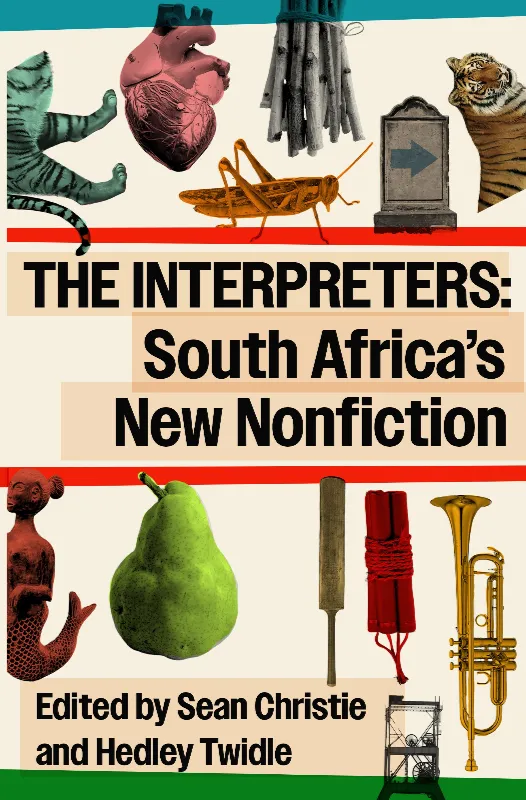Book review: The Interpreters

book cover The Interpreters: South Africa's New Nonfiction
Image: supplied
The Interpreters: South Africa’s New Nonfiction
Edited by Sean Christie and Hedley Twidle
Soutie Press
Review: Lauren O’Connor-May
I really enjoyed this book and hope that a copy finds its way onto every library shelf, especially in high schools.
It’s hard to sum up what this book is. One of its editors, Hedley Twidle, seemed to have a similar struggle when he wrote the introduction. To simply call it a collection of non-fiction falls too far short, but in essence, that is what it is.
Twidle’s own description says: “A broad spectrum of compelling, ambitious and artful literature shelters within that unhelpful ‘non’. This includes narrative and longform journalism, essays and memoir, reportage, feature and profiles, life writing in its many variants, from private diaries to public biography; oral histories, interviews and testimony — all those forms caught up in the alchemy of spoken becoming written.”
This description not only gives an idea of what can be found in the book but also a taste of the calibre of writing collected there – writing so good, it made me feel like I should go back to school.
This is the first time I can recall writing a review where I did not find anything worth mentioning critically. There are only “what I liked” points in this review, and the first is the concept. This anthology feels like a celebration of good writers and good journalism – some of it award-winning.
Secondly, I liked that the stories are bite-sized. This anthology feels like a magazine with a super-long shelf life and no ads. It is ideal for quick, short dips, like short plane rides or unexpected waits.
I am also completely fangirling about the quality of writing and have made notes of the writers I liked the most to look up more of their work.
One of my favourite stories is In The Jungle by Rian Malan. Malan recounts the now well-known story of the original songwriter of The Lion Sleeps Tonight and the meagre compensation he was given after the song was appropriated and covered so many times that it became intrinsic in pop culture. The song became known the world over while Solomon Linda remained relegated to obscurity. Bits of this story are now fairly well-known, but Malan may have been the first to lift the lid, and I have not seen any other account as meticulous as this one.
I also enjoyed On Graciousness and Convenience: Cape Cottaging c1960-1980. I read with wide eyes and an open mouth as Michiel Heyns exposed the long-held secrets, codes and places of liaison for gay men in Cape Town, pre-90s and before modern media made the clandestine codes obsolete.
I mention only these two, but truthfully, all the stories collected here were enlightening. I hope this collection is the first of many.
Related Topics: